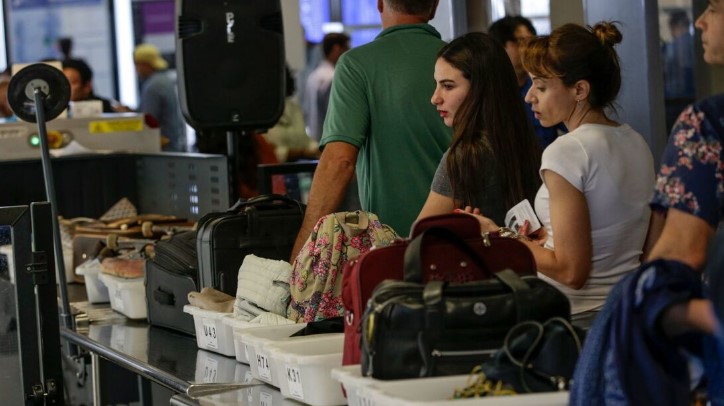
Global trade slowdown
- फ़रवरी 14, 2023
- 0
Global merchandise trade is expected to decline sharply during 2023. There are many factors responsible for its decline, such as the declining trend in the markets of major economies like Europe, China and America, the cost of living due to the increase in the prices of food and fuel oil, and the increase in the cost of manufacturing, in many countries tighter monetary policy conditions and frequent supply chain disruptions. Therefore, global trade is expected to decline by 3.5 per cent in 2022 and by one per cent by 2023. (WTO Press/909, October 5, 2022)
However, the decline in global trade is not a new issue. In fact, in the early 1990s, global trade got a boost from Global Value Chains (GVCs). It was rescheduled after the financial crisis of 2008-09, since then the rate of growth of trade has slowed down. Then what’s new in this?
In the early years of the last decade, the GVC was changed in the wake of the natural disaster that hit East Asia. Therefore, it had an adverse effect on a particular time and business. Towards the end of the decade, the US-China trade war broke out and GVCs diversified under the strategy ‘China plus one’. Post pandemic, there was a need to speed up the process for restructuring and diversification of GVCs.
The Ukraine crisis had the greatest impact on this process. The chances of an early end to this war seem to be waning. Ukraine has been devastated by the war and political re-alignment with Russia may take a long time. Russia and Ukraine have been suppliers of GVC’s important elements and minerals.
The effect of these unprecedented and unexpected events will be that MNCs will have to keep re-evaluating volatility and risk. At the same time, new coordination has to be done with global business partners.
वैश्विक व्यापार में धीमापन
वैश्विक वाणिज्य वस्तु व्यापार में 2023 मे दौरान तेजी से गिरावट आने का अंदेशा जताया गया है। इसकी गिरावट के लिए कई उत्तरदायी कारक हैं-जैसे यूरोप, चीन और अमेरिका जैसी प्रमुख अर्थव्यवस्थाओं के बाजार में गिरावट का रूख, खाद्य व ईंधन के तेल की कीमतों में इजाफे के कारण रहन-सहन के खर्चे और विनिर्माण की लागत में बढ़ोतरी, कई देशों में सख्त मौद्रिक नीति की स्थितियां और आपूर्ति श्रृंखला में बार-बार रूकावट आना। इसलिए वैश्विक व्यापार में 2022 में 3.5 फीसदी की गिरावट और 2023 तक एक फीसदी तक की गिरावट आने का अंदेशा हैै। (डब्ल्यूटीओ प्रेस/909, 5 अक्टूबर, 2022)
हालांकि वैश्विक व्यापार में कमी आना नया मुद्दा नहीं है। दरअसल 1990 के दशक के शुरूआती सालों में वैश्विक व्यापार को वैश्विक मूल्य श्रृंखला (जीवीसी) से गति मिली थी। वर्ष 2008-09 के वित्तीय संकट के बाद इसका पुनर्निर्धारण किया गया था, उसके बाद से व्यापार की वृद्धि दर मंद पड़ी है।
फिर इसमें क्या नया है? बीते दशक के शुरूआती सालों में पूर्वी एशिया में आई प्राकृतिक आपदा के मद्देनजर जीवीसी में बदलाव किया गया था। लिहाजा इसका प्रतिकूल असर एक खास समय और व्यापार पर पड़ा था। इस दशक के अंत में अमेरिका-चीन में व्यापारिक युद्ध हो गया था और रणनीति ‘चीन प्लस वन‘ के तहत जीवीसी का विविधीकरण किया गया था। महामारी के बाद जीवीसी के पुनर्निर्धारण और विविधीकरण के लिए प्रक्रिया को और तेजी से आगे बढ़ाने की जरूरत थी।
यूक्रेन संकट ने इस प्रक्रिया पर सबसे ज्यादा असर डाला। इस युद्ध के जल्दी खत्म होने की संभावना क्षीण होती दिख रही है। इस युद्ध से यूक्रेन में भारी तबाही हुई है और रूस से राजनीतिक रूप से पुनः तालमेल स्थापित करने में अधिक समय लग सकता है। जीवीसी के महत्वपूर्ण तत्वों और खनिजों के आपूर्तिकर्ता रूस और यूक्रेन रहे है।
इन अभूतपूर्व एवं अनपेक्षित घटनाओं का प्रभाव यह होगा कि बहुराष्ट्रीय कंपनियों को उतार-चढ़ाव व जोखिम का पुनआर्कलन करते रहना पडे़। साथ ही साथ वैश्विक कारोबारी साझेदारों के साथ नए सिरे से तालमेल भी करना पड़े।

































































